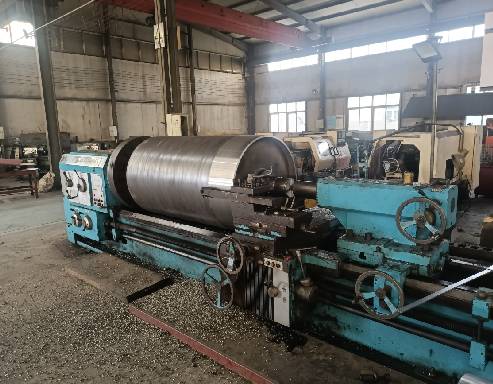 Afrikaans
Afrikaans  Albanian
Albanian  Amharic
Amharic  Arabic
Arabic  Armenian
Armenian  Azerbaijani
Azerbaijani  Basque
Basque  Belarusian
Belarusian  Bengali
Bengali  Bosnian
Bosnian  Bulgarian
Bulgarian  Catalan
Catalan  Cebuano
Cebuano  Corsican
Corsican  Croatian
Croatian  Czech
Czech  Danish
Danish  Dutch
Dutch  English
English  Esperanto
Esperanto  Estonian
Estonian  Finnish
Finnish  French
French  Frisian
Frisian  Galician
Galician  Georgian
Georgian  German
German  Greek
Greek  Gujarati
Gujarati  Haitian Creole
Haitian Creole  hausa
hausa  hawaiian
hawaiian  Hebrew
Hebrew  Hindi
Hindi  Miao
Miao  Hungarian
Hungarian  Icelandic
Icelandic  igbo
igbo  Indonesian
Indonesian  irish
irish  Italian
Italian  Japanese
Japanese  Javanese
Javanese  Kannada
Kannada  kazakh
kazakh  Khmer
Khmer  Rwandese
Rwandese  Korean
Korean  Kurdish
Kurdish  Kyrgyz
Kyrgyz  Lao
Lao  Latin
Latin  Latvian
Latvian  Lithuanian
Lithuanian  Luxembourgish
Luxembourgish  Macedonian
Macedonian  Malgashi
Malgashi  Malay
Malay  Malayalam
Malayalam  Maltese
Maltese  Maori
Maori  Marathi
Marathi  Mongolian
Mongolian  Myanmar
Myanmar  Nepali
Nepali  Norwegian
Norwegian  Norwegian
Norwegian  Occitan
Occitan  Pashto
Pashto  Persian
Persian  Polish
Polish  Portuguese
Portuguese  Punjabi
Punjabi  Romanian
Romanian  Russian
Russian  Samoan
Samoan  Scottish Gaelic
Scottish Gaelic  Serbian
Serbian  Sesotho
Sesotho  Shona
Shona  Sindhi
Sindhi  Sinhala
Sinhala  Slovak
Slovak  Slovenian
Slovenian  Somali
Somali  Spanish
Spanish  Sundanese
Sundanese  Swahili
Swahili  Swedish
Swedish  Tagalog
Tagalog  Tajik
Tajik  Tamil
Tamil  Tatar
Tatar  Telugu
Telugu  Thai
Thai  Turkish
Turkish  Turkmen
Turkmen  Ukrainian
Ukrainian  Urdu
Urdu  Uighur
Uighur  Uzbek
Uzbek  Vietnamese
Vietnamese  Welsh
Welsh  Bantu
Bantu  Yiddish
Yiddish  Yoruba
Yoruba  Zulu
Zulu Guide Brackets for Conveyor Side Alignment and Support Solutions
Understanding Conveyor Side Guide Brackets Importance and Applications
In modern manufacturing and logistics, conveyor systems play a critical role in ensuring efficient material handling and product movement. Within these systems, conveyor side guide brackets serve a pivotal function. These brackets are integral components that support and align the conveyor belts, guiding the products smoothly along their designated paths. This article delves into the significance, types, and applications of conveyor side guide brackets.
The Importance of Conveyor Side Guide Brackets
Conveyor side guide brackets are designed to keep items from straying off course during transport. Misalignment or product deviation can lead to significant operational inefficiencies, including product damage, increased downtime, and higher maintenance costs. By ensuring that products remain on track, side guide brackets enhance the overall reliability of conveyor systems.
Moreover, side guides help in the safe transportation of products of various shapes and sizes. They are essential for maintaining the integrity of fragile items and preventing collision or spillage, especially in high-speed conveyor systems. With the right side guides, businesses can minimize losses and maximize productivity.
Types of Conveyor Side Guide Brackets
Conveyor side guide brackets come in a variety of designs and materials to accommodate different applications and environments. Some of the most common types include
1. Fixed Brackets These are permanently mounted and provide a stable guide along the length of the conveyor. Fixed brackets are ideal for applications that do not require adjustments and where the product size is consistent.
2. Adjustable Brackets These brackets can be modified in width to accommodate varying product sizes. Adjustable side guides are crucial in production lines with diverse product ranges and sizes, allowing for quick changes between different runs.
3. Roller Brackets These utilize rollers attached to the brackets to aid in the movement of products. Roller brackets can reduce friction and wear on both the product and conveyor belt, making them suitable for heavier or bulkier items.
conveyor side guide brackets

4. Plastic and Metal Variants While plastic brackets offer the advantage of corrosion resistance and lightweight characteristics, metal brackets tend to provide superior strength and durability in harsh environments.
Applications of Conveyor Side Guide Brackets
Gathering insight into various applications helps illustrate the invaluable role that conveyor side guide brackets play across industries. Here are some key areas where they are commonly utilized
1. Food and Beverage Industry In this sector, conveyors transport food items, packaged goods, and beverages. Side guide brackets help maintain hygiene standards by preventing spills and ensuring that products remain on the belt during transport, crucial in adhering to safety regulations.
2. Automotive Manufacturing In automotive assembly lines, precision is vital. Side guide brackets help to properly position parts, ensuring that each component moves smoothly from one station to another without obstruction.
3. Warehousing and Distribution Centers These facilities often deal with a high volume of packages that may vary in size and shape. Side guide brackets can be adjusted to suit different packages, maintaining efficiency and organization during sorting and dispatch operations.
4. Textile and Apparel Industry Conveyor systems in the textile industry are used to transport rolls of fabric as well as finished garments. Side guides prevent the fabric from falling off or getting tangled, facilitating a smoother production flow.
5. Pharmaceuticals Precise handling is essential in the pharmaceutical sector, where side guide brackets help maintain the position of products, aiding in packaging and labeling processes without causing damage.
Conclusion
Conveyor side guide brackets are vital components of conveyor systems that facilitate the efficient movement of products. With their ability to maintain alignment and prevent product deviations, they contribute to improved operational efficiency and reduced costs in various industries. By selecting the appropriate type of side guide bracket for their specific needs, companies can enhance the performance of their conveyor systems and ensure smooth, reliable operations. As technology continues to evolve, the design and function of these brackets may advance, further optimizing material handling processes and setting new industry standards.
-
Revolutionizing Conveyor Reliability with Advanced Rubber Lagging PulleysNewsJul.22,2025
-
Powering Precision and Durability with Expert Manufacturers of Conveyor ComponentsNewsJul.22,2025
-
Optimizing Conveyor Systems with Advanced Conveyor AccessoriesNewsJul.22,2025
-
Maximize Conveyor Efficiency with Quality Conveyor Idler PulleysNewsJul.22,2025
-
Future-Proof Your Conveyor System with High-Performance Polyurethane RollerNewsJul.22,2025
-
Driving Efficiency Forward with Quality Idlers and RollersNewsJul.22,2025





























